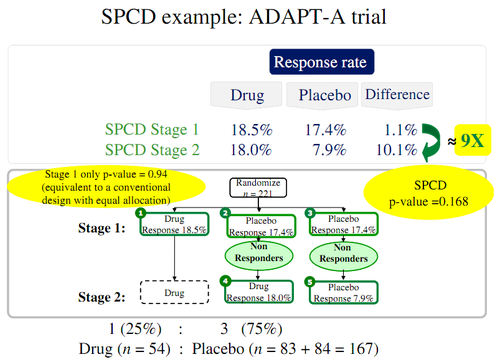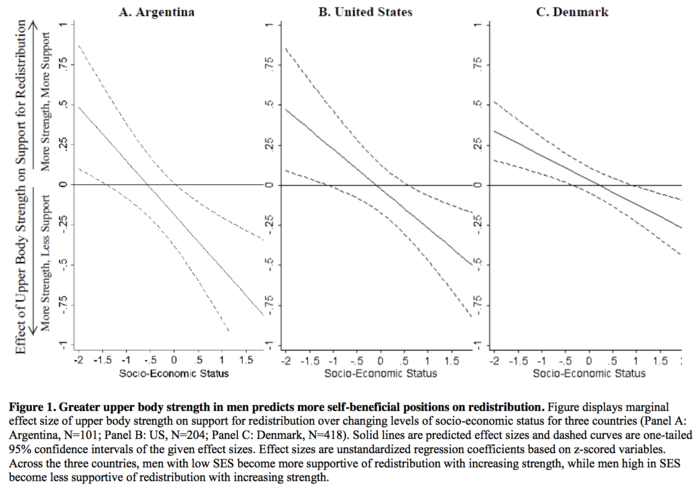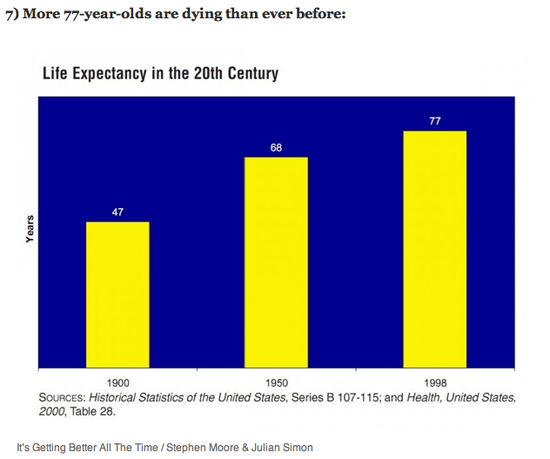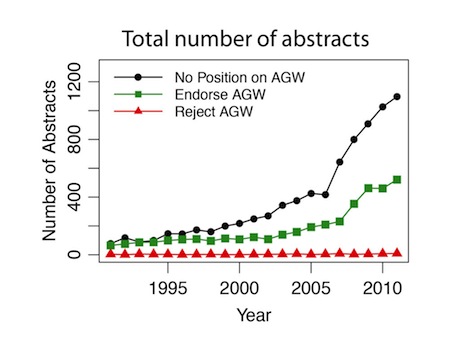Chance News 93
April 4, 2013 to June 9, 2013
Quotations
“The magic of statistics cannot create information when there is none.”
Submitted by Margaret Cibes
He [Stapel] viewed himself as giving his audience what they craved: 'structure, simplicity, a beautiful story.' Stapel glossed over experimental details, projecting the air of a thinker who has no patience for methods. The tone of his talks, he said, was 'Let’s not talk about the plumbing, the nuts and bolts — that’s for plumbers, for statisticians.'"
[Stapel is the disgraced Dutch academic who faked his data to show statistical significance].
Submitted by Paul Alper
"Statistics is a subject that many medics find easy but most statisticians find difficult."
Submitted by Paul Alper
"Bertrand Russell reports that even Aristotle had trouble following the tenets of empiricism in all aspects of his own life, for he maintained that women have fewer teeth than men; although he was twice married, it never occurred to him to verify this statement by examining his wives' mouths."
Submitted by Paul Alper
“Insurance is heavily dependent on scientific thought. It is not as amenable to politicized scientific thought.”
For insurers, no doubts on climate change, New York Times, 14 May 2013
Submitted by Bill Peterson
(For some more quotations regarding climate change, see Paul Alper's post below.)
“Economists treat replication the way teenagers treat chastity – as an ideal to be professed but not to be practiced.”
Replicating research: Austerity and beyond, New York Times, 22 April 2013
Forsooth
Ignorance is bliss, or is it?
“I remember a few years ago looking at peer rankings of graduate departments and being delighted to discover that among statistics departments my own alma mater was in the top ten (although my trust in the process was tempered by the knowledge that, despite its lofty ranking, Princeton’s statistics department had been disbanded decades earlier.)”
“As they do on many obscure policy issues, Americans polarize sharply along partisan lines when they learn that President Barack Obama supports a repeal of the 1975 Public Affairs Act. …. There's one striking problem here: The 1975 Public Affairs Act does not exist. …. In a series of surveys that polled national samples about similarly fictitious or otherwise unknown legislation, [pollsters] found 20 to 40 percent of Americans were willing to offer opinions on laws they have never heard of.”
“Most uses of the classical tools of statistics have been, are, and will be, made by those who know not what they do.”
Submitted by Margaret Cibes
"If you're living in that area of Moore in Oklahoma, the likelihood of being hit by another tornado is about zero in terms of odds," he [Sen. Tom Coburn, R-Oklahoma] said. MSNBC's Brian Shactman attempted to correct Coburn, but the senator dug in. "The odds weren't the same, that's completely wrong," he said. "If you've had two tornadoes in 14 years, and then you're saying the odds of that is the same going forward, that's not right at all. You need to check your statistics class."
Submitted by Mike Olinick
Update: In New twisters kill 5 in tornado traumatized Oklahoma (CNN, 1 June 2013), we read that "mayor [of Moore] Glenn Lewis sat in a storm shelter, as he spoke with CNN's Anderson Cooper. 'This is unbelievable that it could possibly even hit again,' he said. 'We just started picking up (debris) two days ago.'"
Justice flunks math
Thanks to Bob Griffin, who sent a link the following:
- Justice flunks math, by Liela Schneps and Caolie Colmez, New York Times, 26 March 2013
This op/ed piece is a response to the recent developments in the case of Amanda Knox (Italy’s highest court overturns acquittal of Amanda Knox, NYT, 26 March 2013). In 2009, Knox and her ex-boyfriend were convicted in Italy for the murder of Knox's roommate. The twists and turns in her prosecution have been widely documented in the media. In 2011, an appeals court overturned the convictions. But now the Court of Cassation has ordered that the case be retried.
According to Schneps and Colmez, "The Court of Cassation has not yet publicly explained the motivations behind its ruling. But the appellate judge’s failure to understand probability may well play a role." A judge has refused to order a retest of a DNA sample, recovered in 2007 from a knife in Knox's apartment, that had been tentatively linked to the victim. They continue:
Whatever concerns the judge might have had regarding the reliability of DNA tests, he demonstrated a clear mathematical fallacy: assuming that repeating the test could tell us nothing about the reliability of the original results.
Imagine, for example, that you toss a coin and it lands on heads 8 or 9 times out of 10. You might suspect that the coin is biased. Now, suppose you then toss it another 10 times and again get 8 or 9 heads. Wouldn’t that add a lot to your conviction that something’s wrong with the coin? It should.
Schneps and Colmez have collaborated on a recent book Math on Trial: How Numbers Get Used and Abused in the Courtroom, which explores misapplications of statistics in criminal trials (a review in an earlier NYT article links to an excerpt). Among the cases considered there, and metioned in this article, is the famous Sally Clark crib death trial, in which a mother was accused of murdering her two infant children in 1996 and 1997. Laurie Snell wrote an extended discussion of this for Chance News #5. Another is the case of a a Dutch nurse, Lucia de Berk, who in 2003 was wrongfully convicted of murdering several patients. During her appeal in 2007, a New York Times blogpost explored how the Prosecutor's Fallacy figured in this case.
Correlation vs. causation tales
Here are two new recent stories that show that the need for constant vigilance in explaining that association is not causation.
Double majors produce dynamic thinkers, study finds.
by Dan Berrett, Chronicle of Higher Education, 15 March 2013
Jeff Witmer sent this article to the Isolated Statisticians list, and also this link to the original study.
The Chronicle site requires a subscription, but Jeff provided the two revealing quotations that appear below. First the description of the findings:
- "Students who major in two fields are more apt than their single-majoring peers to think both integratively and creatively, according to a new study."
Of course, we should ask ourselves whether the increase in creativity was a result of double-majoring, or whether integrative thinkers are more likely to choose double-majors. As Jeff points out, this point was apparently lost on the Chronicle, which ironically followed up with this statement.
- "While the rate of double majors at the nation's colleges is 9 percent, it was 19 percent in the researchers' sample, reflecting the generally high caliber of students at elite institutions."
In another recent example, Paul Alper sent a link to these the following:
Researchers finally replicated Reinhart-Rogoff, and there are serious problems
by Mike Konczal, Next New Deal blog, 16 April 2013
Reinhart and Rogoff are economists whose writing about the relationship between economic growth and government debt have been frequently cited in the discussion over the US national debt (here is a link from the Wall Street Journal to the 2010 Reinhart-Rogoff paper, Growth in a time of debt). In his blog post, Konczal quotes Paul Ryan's Path to Prosperity budget as saying that Reinhart-Rogoff "found conclusive empirical evidence that [debt] exceeding 90 percent of the economy has a significant negative effect on economic growth."
Not surprisingly, deficit hawks argue that increased spending has led to excessive debt, causing slower growth. But, as with the previous story, we should be asking whether the causality could go the other way: perhaps slower growth has driven up the debt by reducing government revenues. Probably debt and growth interact in a more complicated way than either of these simple explanations suggest. The point again is not to seize on an observed association as definitive proof for one's favored theory.
Now even more serious trouble has emerged. Other researchers trying to reproduce the analysis uncovered errors in the spreadsheet model Reinhart and Rogoff used to code their data. The mistake had the effect of excluding some high-debt countries that did not experience subpar growth (see The Excel depression by Paul Krugman, New York Times, 18 April 2013). There also appeared to be some selective omissions of high-debt years that did not fit the theory. When these problems are corrected, the famous 90 percent figure no longer stands out as a critical turning point. But of course this was the feature that drew so much attention to the model in the first place.
Paul Alper also provided a link to Andrew Gelman's blogpost Memo to Reinhart and Rogoff: I think it’s best to admit your errors and go on from there (16 April 2013).
Submitted by Bill Peterson
Randomly funny
“These Amazon Products Are No Joke, But the Online Reviews Are”
The Wall Street Journal, April 30, 2013
Apparently there are thousands of people submitting satirical reviews of books and other products to Amazon’s website.
This article’s opening focus was on reviews of RAND’s 600-page, 60-year-old paperback A Million Random Digits With 100,000 Normal Deviates. (See “A Million Random Digits” for a pdf or e-copy of the book, as well as RAND’s motivation for preparing the book.)
Here are two creative reviews:
“Almost perfect …. But with so many terrific random digits, it's a shame they didn't sort them, to make it easier to find the one you're looking for.”
“[T]he first thing I thought to myself after reading chapter one was, ‘Look out, Harry Potter!’”
The article also reported:
One Amazon reviewer panned a real-life copycat publication called "A Million Random Digits THE SEQUEL: with Perfectly Uniform Distribution." "Let's be honest, 4735942 is just a rehashed version of 64004382, and 32563233 is really nothing more than 97132654 with an accent."
And Amazon’s uranium ore sample product drew the review, "I purchased this product 4.47 billion years ago and when I opened it today, it was half empty."
This article, including reviews of many other books and products, is a wonderful end-of-year read! The 59 comments are also interesting, as many discuss randomness and/or cite other sources of satirical reviews!
Submitted by Margaret Cibes
Significance magazine free to all in 2013
To celebrate the International Year of Statistics all 2013 issues of Significance magazine are FREE to read via the Significance iOS and Android Apps, and I accessed them, without my subscriber login, on my computer. Sign in here.
Some tantalizing tidbits from the February 2013 issue:
"The world's ecosystems provide services to mankind valued at $16-54 trillion per year – a value which has been described as "a serious underestimate of infinity.'"
"[T]he combined evidence does indicate him [Lance Armstrong] as a singular outlier even without considering drugs. …. [T]here was also a significant science behind his riding. …. When it is all assembled, it is improbable that Armstrong's advanced doping could explain his consecutive wins."
"We have shown that the normal distribution, combined with current information available on height of fully grown adults, is just not enough to exclude the possibility that a person with negative body height could exist."
Submitted by Margaret Cibes
The gold (acre) standard, fool's gold
- In scenes that could have come straight from a spy farce, the French journal Prescrire applied to Europe’s drug regulator for information on the diet drug rimonabant. The regulator sent back 68 pages in which virtually every sentence was blacked out.'
The gold standard in medical research is the randomized clinical trial, RCT. Unfortunately, gold has not been doing particularly well lately in the stock market and if you read Ben Goldacre’s book, Bad Pharma: How Drug Companies Mislead Doctors and Harm Patients, neither have randomized clinical trials. Goldacre is an MD and an epidemiologist as well as a terrific writer and lecturer. Bad Pharma is the most depressing book imaginable for statisticians to read because he shows how RCTs can be manipulated and cause amazing, costly damage to society.
The book is over 400 pages of carefully annotated unrelenting doom. For example, on page x of the Introduction;
Drugs are tested by the people who manufacture them, in poorly designed trials, on hopelessly small numbers of weird, unrepresentative patients, and analysed using techniques which are flawed by design, in such a way that they exaggerate the benefits of treatment. Unsurprisingly, these trials tend to produce results that favour the manufacturer. When trials throw up results that companies don’t like, they are perfectly entitled to hide them from doctors and patients, so we only ever see a distorted picture of any drug’s true effects.
MDs
can be in the pay of drug companies--often undisclosed--and the journals are too. And so are the patient groups. And finally, academic papers, which everyone thinks of as objective, are often covertly planned and written by people who work directly for the companies without disclosures. Sometimes whole academic journals are even owned outright by one drug company.
All that and we are only at page xi in the Introduction! The rest of the 400 or so pages are devoted to backing up his incendiary introductory assertions. Fascinating reading, all of it, but a short synopsis may be found here and a marvelous and witty TED talk by Goldacre here. An earlier and equally amusing TED talk by Goldacre about similar subject matter may be found here.
Discussion
1. His Chapter 4 is entitled, “Bad Trials” and contains over 50 pages. The subheadings are
- Outright fraud
- Test your treatment in freakishly perfect ‘ideal’ patients
- Test your drug against something useless
- Trials that are too short
- Trials that stop early
- Trials that stop late
- Trials that are too small
- Trials that measure uninformative outcomes
- Trials that bundle their outcomes together in odd ways
- Trials that ignore drop-outs
- Trials that change their main outcome after they’ve finished
- Dodgy subgroup analyses
- Dodgy subgroups of trials, rather than patients
- ‘Seeding Trials’
- Pretend it’s all positive regardless
Each subheading is illustrated with actual drug trials. Any one of those “Bad Trials” has frightening consequences. Pick a trial mentioned in the book and present Goldacre’s evidence.
2. He devotes 100 pages to the topic “Missing Data.” Because Tamiflu is considered at length in this chapter, compare and contrast what Goldacre writes about Tamiflu with what appears in Wikipedia about oseltamivir.
3. Another 100 pages in the book is covered under “Marketing.” In particular, note the role played by KOLs, “key opinion leaders.”
4. Goldacre’s last chapter is entitled, “Afterword: Better Data” where he pleads for “full disclosure:
We now know that this entire evidence base has been systematically distorted by the pharmaceutical industry, which has deliberately and selectively withheld the results of trials whose results it didn’t like, while publishing the ones with good results…It is not enough for companies to say that they won’t withhold data from new trials starting from now: we need the data from older trials, which they are still holding back, about the drugs we are using every day.
To the workers in the pharmaceutical industry, “I also encourage you to become a whistleblower” and “If you need any help, just ask: I will do everything I can to assist you.” Given the recent experience of whistleblowers in government employ, how realistic is Goldacre’s plea?
5. A typical RCT has a placebo arm to be compared to the treatment arm. According to Kas Thomas
The problem of rising placebo response is seen as a crisis in the pharma industry, where psych meds are runaway best-sellers, because it impedes approval of new drugs. Huge amounts of money are on the line.
Thomas further asserts
The drug companies say these failures [of the drugs to outperform the placebos] are happening not because their drugs are ineffective, but because placebos have recently become more effective in clinical trials.
In order to mitigate the effectiveness of placebos, drug manufacturers have devised SPCD, The Sequential Parallel Comparison Design:
SPCD is a cascading (multi-phase) protocol design. In the canonical two-phase version, you start with a larger-than-usual group of placebo subjects relative to non-placebo subjects. In phase one, you run the trial as usual, but at the end, placebo non-responders are randomized into a second phase of the study (which, like the first phase, uses a placebo control arm and a study arm).
Below is an illustration of how SPCD works and its possible benefits:

Thomas is very suspicious of the procedure:
This bit of chicanery (I don't know what else to call it) seems pointless until you do the math…basically, if you optimize the ratio of placebo to study-arm subjects properly, you end up increasing the overall power of the study while keeping placebo response minimized. This translates to big bucks for pharma companies, who strive mightily to keep the cost of drug trials down by enrolling only as many subjects as might be needed to give the study the desired power. In other words, maximizing study power per enrollee is key. And SPCD does that.
The whole idea that placebo effect is getting in the way of producing meaningful results is repugnant, I think, to anyone with scientific training.What's even more repugnant, however, is that…[it] didn't stop with a mere paper in Psychotherapy and Psychosomatics…[the creators of SPCD] …went on to apply for, and obtain, U.S. patents on SPCD (on behalf of The General Hospital Corporation of Boston). The relevant U.S. patent numbers are 7,647,235; 7,840,419; 7,983,936; 8,145,504; 8,145,505, and 8,219,41, the most recent of which was granted July 2012. You can look them up on Google Patents.
The patents begin with the statement: "A method and system for performing a clinical trial having a reduced placebo effect is disclosed." Incredibly, the whole point of the invention is to mitigate (if not actually defeat) the placebo effect. I don't know if anybody else sees this as disturbing. To me it's repulsive.
The well-known statistician, Stephen Senn, made several comments at Thomas’ blog:
The statisticians involved, at least, ought to know better. 1.They are assuming that placebo response is genuine and not just regression to the mean (the latter is usually grossly underestimated). 2. they are assuming that it is reproducible and not transient. 3. they are assuming that the FDA is asleep. If the Agency is not dozing they will make them market the drug as being only suitable for those who have a proven inability to respond to placebo. That should sort them out.
[I]f you take the point of view that the practical question is to see how a drug improves the situation beyond what would normally happen then it seems appropriate to have as a control what would normally happen. What is labelled placebo response is in any case in most cases just regression to the mean. I regard all this placebo response stuff as just so much junk science.
In Stage 1 of the above figure for the ADAPT-A trial, the drug had 10 successes in 54 trials (18.5 %) while the placebo had 29 successes in 167 trials (17.4%). Ignoring the Stage 2 entirely, what do these numbers indicate about rejecting the null hypothesis (drug is equivalent to placebo)?
6. One possible easy way to make the placebo less effective is to tell the subject that he is receiving a worthless sugar pill rather than real medication. Why is this inexpensive, straightforward procedure not utilized?
Submitted by Paul Alper
A man tasting a cocktail
“Vibrated, Not Stirred: Can a Tuning Fork Improve Your Cocktail”
by Wayne Curtis, The Atlantic, May 2013
A writer was interested in a recent theory that stirring a cocktail with a tuning fork would improve the taste, and he was skeptical. He wrote, “I also tried a series of blind taste tests – putting out three glasses of a spirit, then leaving the room while someone applied a tuning fork to a single glass. I was able to correctly identify which drink had been ‘tuned’ approximately one-third of the time.”
Discussion
Did the writer’s blind taste tests provide evidence that use of the tuning fork makes a difference?
Submitted by Margaret Cibes
Biceps and political orientation
All you need to do is Google "upper-body strength Petersen" and you will get over 77,000 hits in the lay press relating to the article by Petersen, et al. A typical example is from Science 2.0
This review begins with
If you are physically strong, social science scholars believe they can predict whether or not you are more conservative than other men...Men's upper-body strength predicts their political opinions on economic redistribution, they write, and they believe that the link may reflect psychological traits that evolved in response to our early ancestral environments and continue to influence behavior today.
Further,
“Despite the fact that the United States, Denmark and Argentina [the three countries in which the study took place] have very different welfare systems, we still see that — at the psychological level — individuals reason about welfare redistribution in the same way," says Petersen [the lead author of the study].
"In all three countries, physically strong males consistently pursue the self-interested position on redistribution…Our results demonstrate that physically weak males are more reluctant than physically strong males to assert their self-interest — just as if disputes over national policies were a matter of direct physical confrontation among small numbers of individuals, rather than abstract electoral dynamics among millions."
No link was found between upper-body strength and redistribution opinions among women. Petersen argues that this is likely due to the fact that, over the course of evolutionary history, women had less to gain, and also more to lose, from engaging in direct physical aggression.
Andrew Gelman comments on this and a similarly sensational-sounding study here.
Discussion
1. Sample a few of the reviews to see if any mentioned such numerical entities as sample sizes, p-value and R-sq. Note that the abstract of the article itself also has no numerical info. The review above, unlike the others, does say "they surveyed hundred of people in America, Denmark and Argentina about bicep size, socioeconomic status, and support for economic redistribution." Obtain the article and determine how many male and female subjects there were in each country.
2. The surrogate for upper-body strength was measured by the “flexed bicep circumference of the dominant arm.” In the U.S. and Argentina, the study relied on college students measuring college students' biceps while in Denmark "a protocol was devised and presented to the subjects over the internet instructing them on how to measure their biceps correctly." As to economic redistribution, the questions used were different in each country, supposedly justified by taking "into account country-specific factors regarding the political discussions on redistribution." With regard to SES (socio-economic status), in Argentina the subjects gave their “own subjective sense,” while in the U.S. SES was determined on “objective measures based on the SES of the parents.” Speculate on what sort of imprecision might result.
3. Reproduced below is Fig. 1 (which describes males only), the only figure in the study. The authors state that Fig. 1 indicates that, “strong men of high SES opposed redistribution, whereas strong men of low SES favored redistribution.” Obtain the study and determine whether the R-sq values are impressive or not. Figure 1 does not show the individual data points. Based on the R-sq values, speculate on the amount of scatter. The dashed lines represent the 90% confidence intervals; what can be said about the 95% confidence intervals and why were they not shown?

4. What was actually done was a linear multiple regression study:
Support for redistribution = f (SES, upper-body strength, upper-body strength * SES)
As it turns out, only the interaction term, upper-body strength*SES has a low p-value (for males but not for females). Because the interaction term has a negative coefficient, the implication is that upper-body strength and SES interact to reduce support for redistribution.
5. Given the many caveats mentioned here, why did the study receive such a large amount of ink? Why did reviewers avoid any numbers? Why did the authors of the study rely so heavily on college students. Why did the authors choose the U.S., Argentina and Denmark?
Submitted by Paul Alper
Uplifting charts?
Paul Alper sent a link to the following:
These 31 charts will destroy your faith in humanity.
by Brad Plumer, Washington Post, 24 May 2013
Plumer revisits a set of graphs that originally appeared as 31 charts that will restore your faith in humanity (by Rob Wile Business Insider, 22 May 2013). He comments, tongue in cheek, that the "charts all struck us as horrible news. So we’re re-analyzing them here with the proper, gloom-heavy spin."
Paul, who tells us he will turn 77 this year (along with John McCain, Anton Scalia, Woody Allen and the Dalai Lama) was struck by the following:

Discussion
The original caption in Business Insider was "People used to die at 47. Now people are living to 77." Comment.
Anthropogenic global warming
Zombie climate sceptic theories survive only in newspapers and on TV
by Graham Readfearn, Guardian, Planet Oz blog, 17 May 2013
According to Readfearn, "since 1991, less than two per cent of all peer-reviewed studies say climate change is caused by something other than human activities." He presents the following graph classifying the abstracts of climate papers according to their position on AGW (anthropogenic global warming).

The following quotations are taken from the post:
- "Like a cardiac monitor warning of a soon-to-be lifeless patient, for more than 20 years the red line hovers around zero showing barely a flicker of life."
- "[John] Cook says they expected to see a rising number of papers which had 'no position' and didn't feel the need to state the obvious 'just as geographers find no reason to remind readers that the earth is round'".
- "In other words, the alternative arguments about the causes of global warming were already dead or dying 20 years ago. Yet since then, climate science contrarians/deniers/sceptics have continually applied the defibrillator paddles to these failing theories in an attempt to bring them back to life."
- "So after giving up on the peer-reviewed literature, the climate science contrarians – often bolstered by support from the fossil fuel industry and free-market idealogues - took their talking points somewhere else. That is, out into the public domain, the mainstream media and the blogosphere and far away from the less forgiving operating theatre of peer-reviewed science journals."
Submitted by Paul Alper
John Cook's blog
John Cook, who is quoted above, maintains the Skeptical Science blog, which is devoted to examining the claims of climate change skeptics. His "escalator" plot has been widely referenced. It demonstrates how the temperature record can be cherry-picked to highlight periods of apparently declining temperatures. A static version is reproduced below.

See his blog post for an animated version and discussion.
Submitted by Bill Peterson